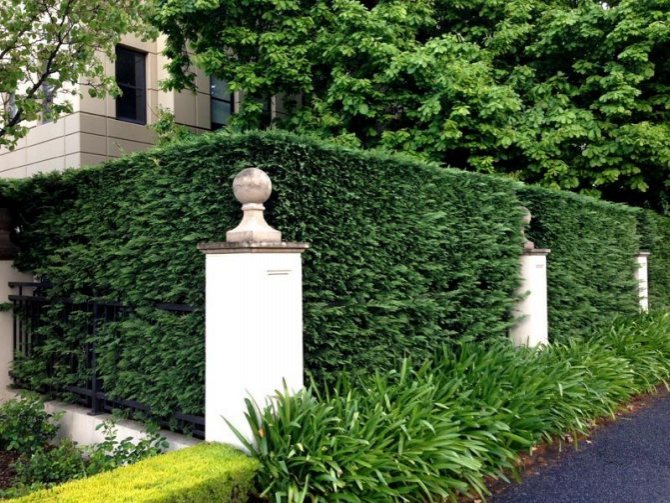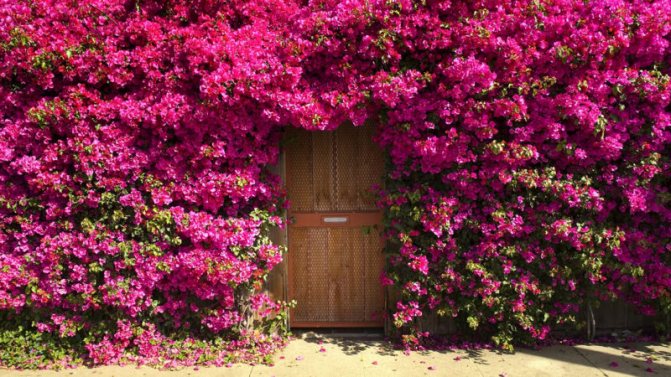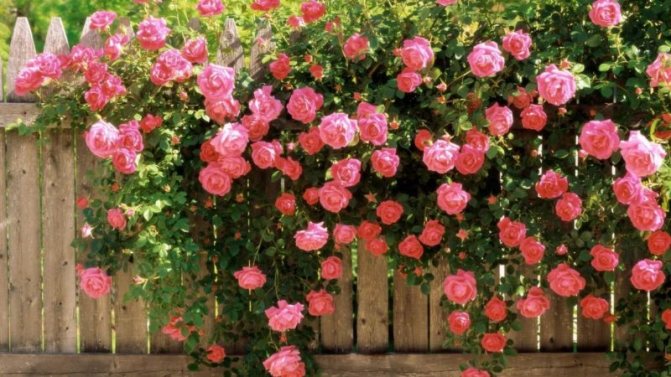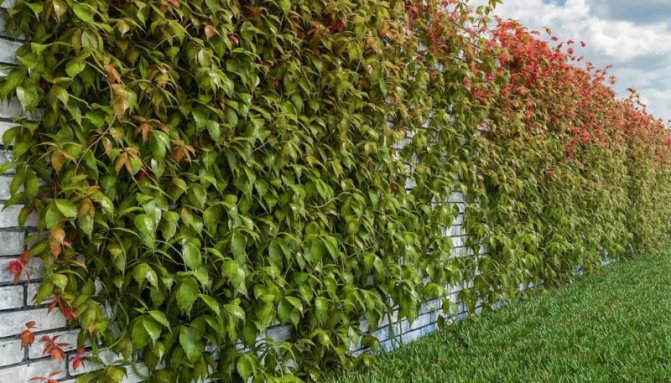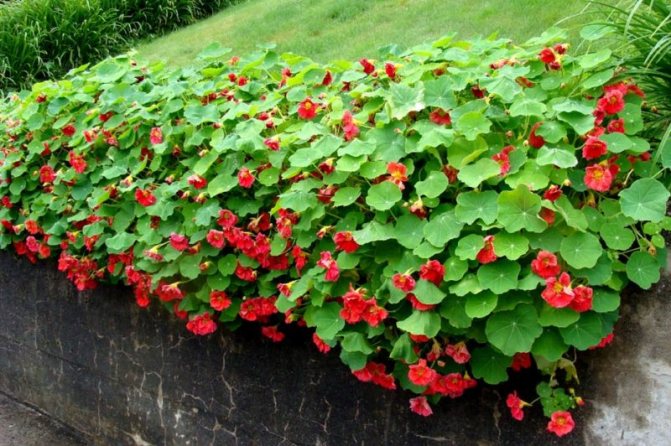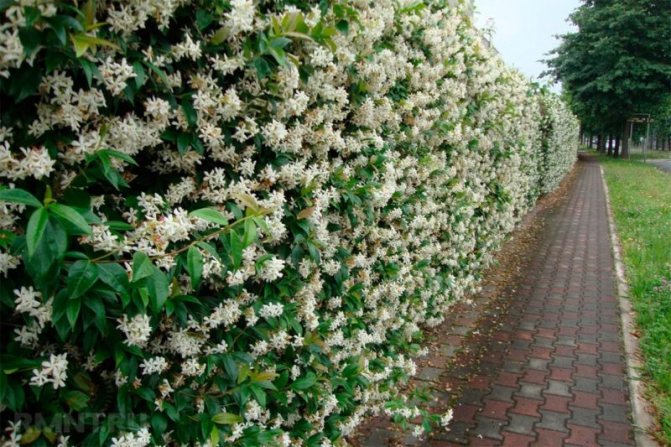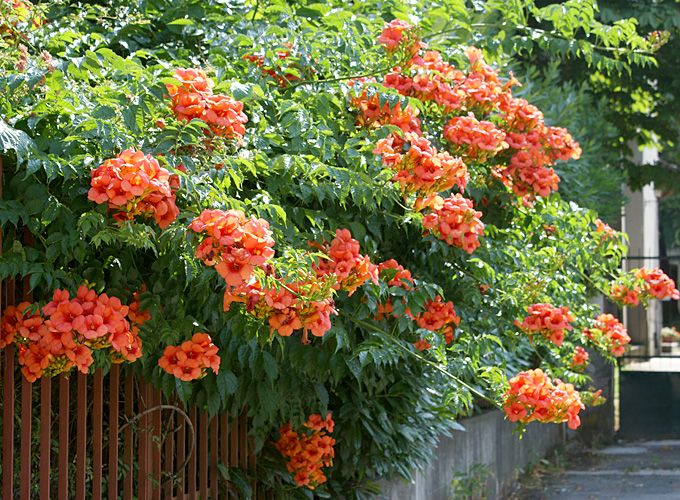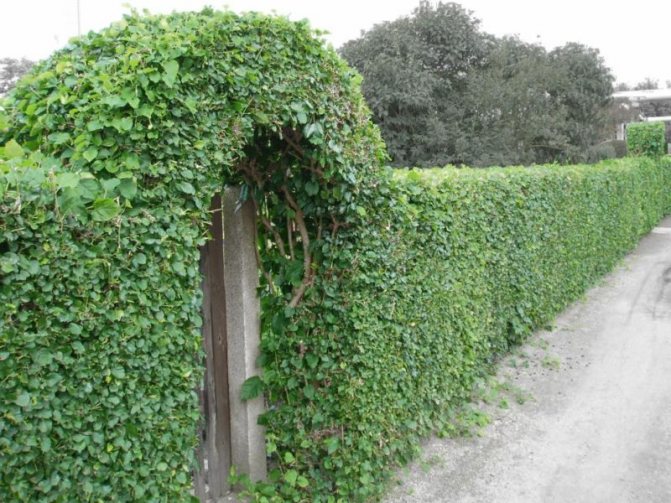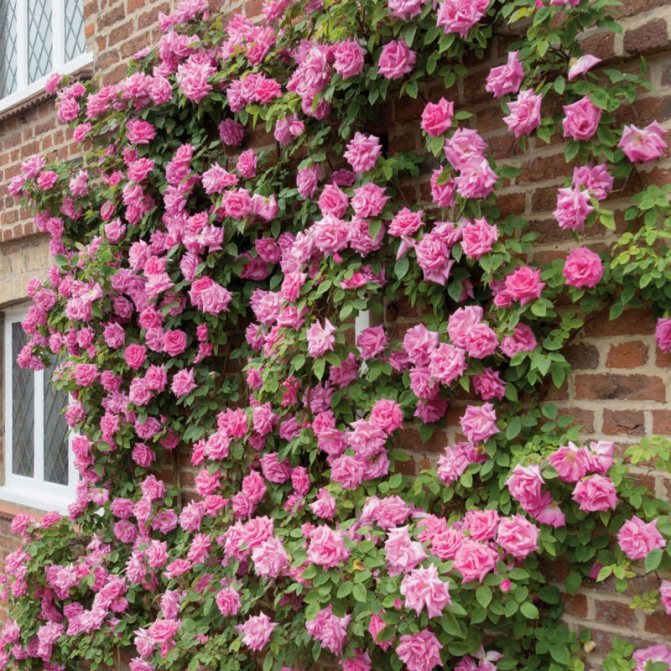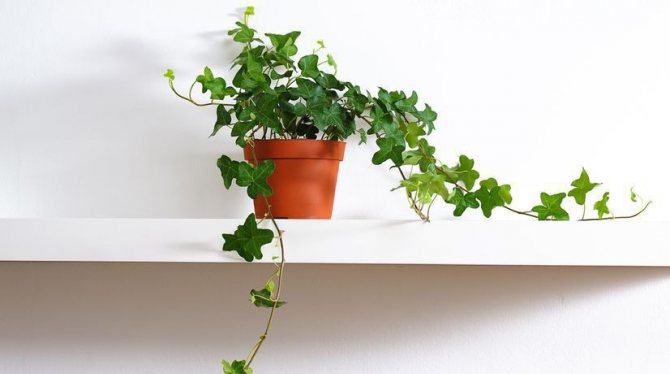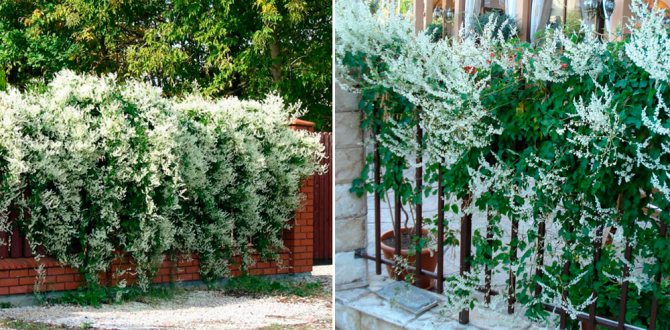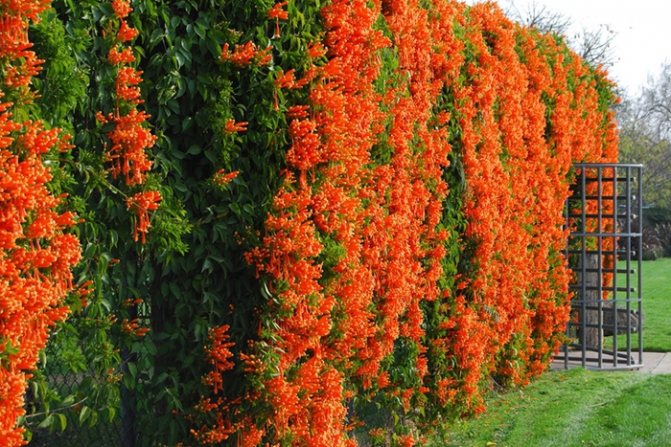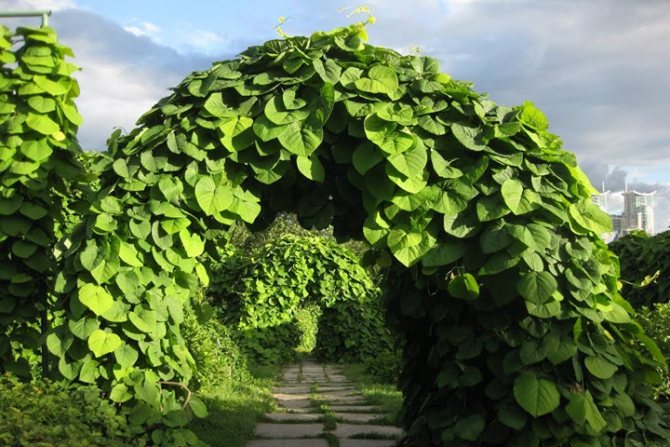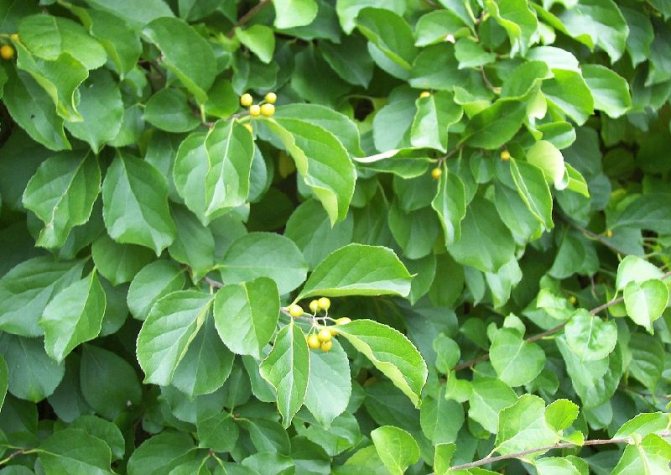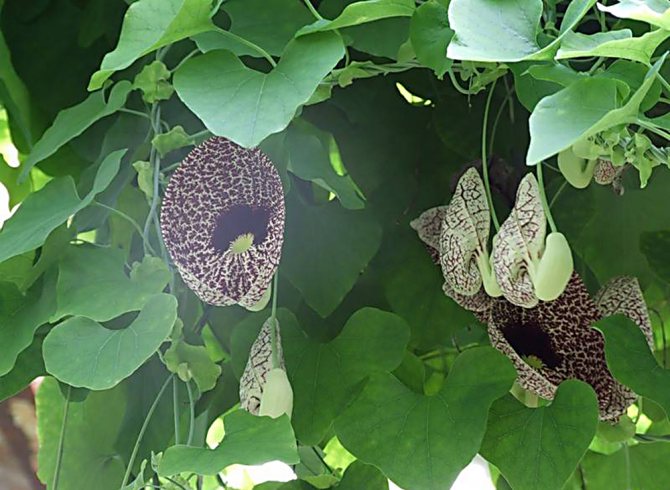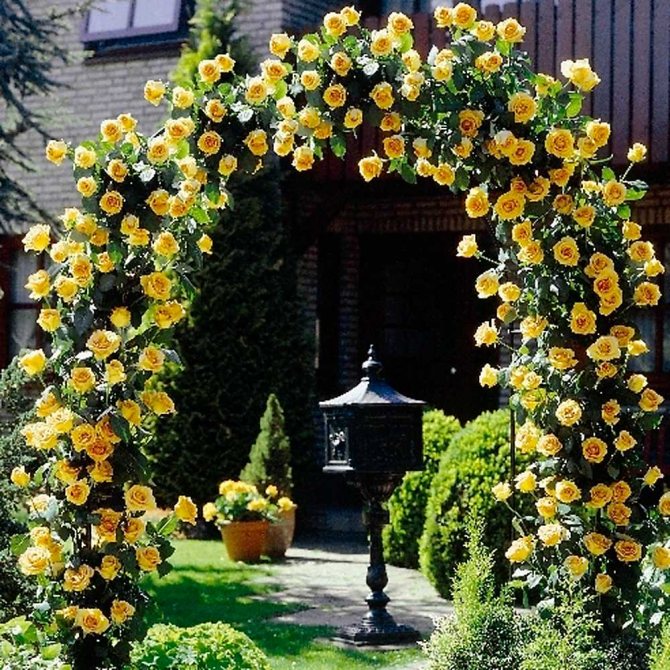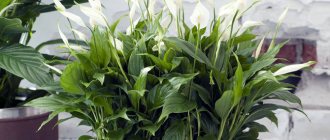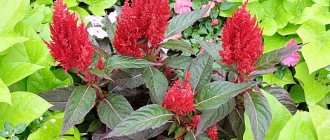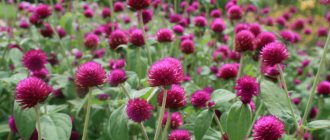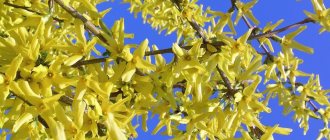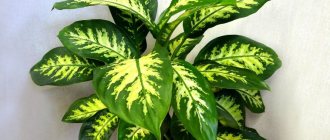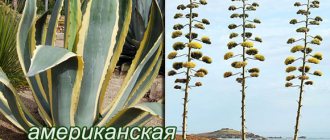Weaving plants are a fashionable solution for landscaping private buildings. With the help of this type of landscape design, it is possible to decorate the hedge, hide flaws and decorate the site. In addition, thanks to the climbing plants, you can hide the house from prying eyes and casual passers-by.
In order to competently decorate fences, as a rule, they resort to the services of professional gardeners. However, if you wish, you can do this yourself.
One way or another, planting climbing plants will require special knowledge and effort. But the result is worth it, and after the allotted time, the hedge will be framed with gorgeous green foliage.
Plantings are selected taking into account the following criteria:
- climatic conditions;
- features of caring for a certain type of plant;
- aesthetic wishes and preferences of the site owner.
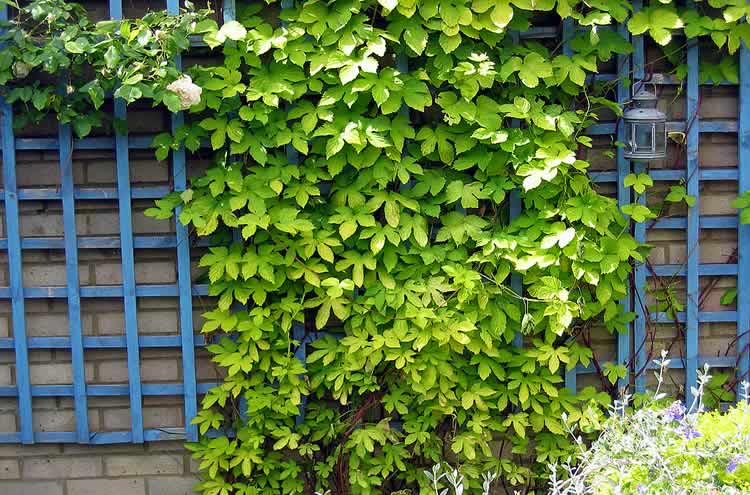
Decorative vines for private buildings delight in variety and can be both annual and perennial. Most homeowners are looking for lush flowering vines when considering options. For a detailed understanding of the issue, it is advisable to consider each category in more detail. And what decorative plantings to choose is, of course, up to the owner to decide.
About climbing perennials
Such fence plants are considered a convenient landscaping option. The application of special efforts is required only at the initial stage, during the period of growth. As an example, we will give delphiniums, which in the future only need pruning.
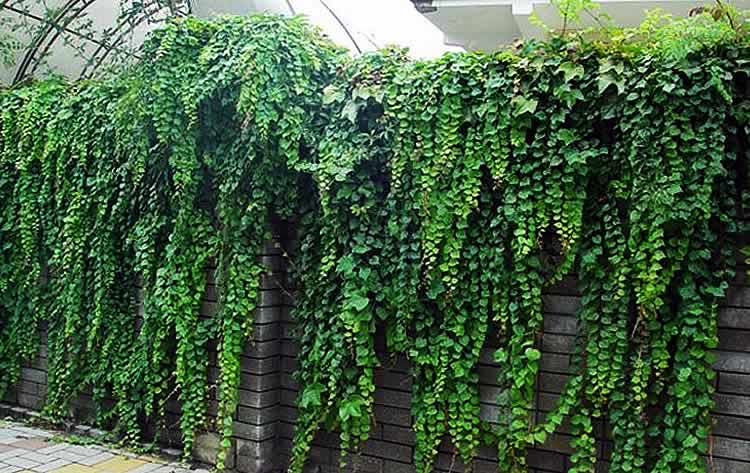

Gardening with grapes
Of course, care is also assumed for adult plantings, but it is much easier than for annuals.
Only the first year will be tense, since perennial climbing plants during this period require:
- regular watering;
- competent aesthetic formation;
- garters.
In addition, decorative vines need to be covered, since frost is destructive for them.
Among the most popular plants for "hedges" are the following:
- grapes;
- ivy;
- hop;
- large-leaved woodworm.
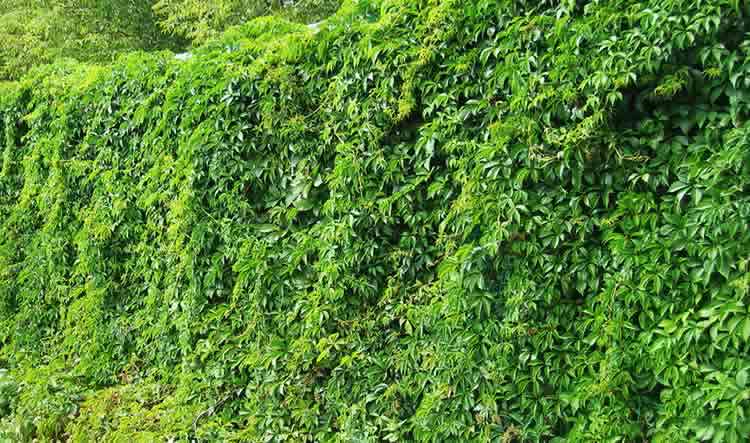

Ivy fence
For landscaping fences, grapes are often used. This is an attractive and unpretentious plant, with the help of which it is easy to ennoble and revive a private building, to make the estate aesthetic and comfortable. The planting of grapes is carried out both from the south and from the north. The main condition for successful cultivation is the presence of fertile soil. The color of the leaves of the plant changes depending on the penetration of light - from dark green to yellowish, purple or orange.


Fence decorated with roses
Another option suitable for the role of a hedge is ivy landscaping. With the help of this plant, it is possible to mask any errors on the fence. At the same time, securing the branches is not particularly difficult, since ivy clings well to the slightest irregularities. The plant loves shade and tolerates winter well. Ivy needs regular soil moisture, which ensures the full development of the root system.
Bushy hops are used to create cool living corners from green tents. Young shoots require careful care, including regular watering, feeding and mandatory preventive measures against aphids.
Often in landscape design, living decor from a round-leaved wood plier is used. The plant is a climbing liana, well suited for landscaping fences and hedges. An indisputable advantage when growing a woodworm is the tolerance of any soil, as well as adaptation to different climatic conditions. In addition, the plantings do not require much maintenance. However, it should be borne in mind that the planting of these vines is not carried out in areas where trees grow, since the woodworm negatively affects them and even leads to death.
Propagation of maidenhair seeds
For growing maidenhair from spores, shallow containers filled with a soil mixture consisting of one part of peat, half of sand and half of leafy earth are used. The soil mixture is compacted and scalded with boiling water. After it cools down, spread the maidenhair spores over the surface, cover them with glass and place the container in a dark, warm place. To disinfect the seed, it is sprayed with a pink solution of potassium permanganate. To speed up the emergence of seedlings, it is advisable to arrange the maidenhair under heating up to 21 ºC. The germination period of seeds is from one week to three months. After the seedlings hatch, remove the glass and move the container to a well-lit, non-sunny place. When the seedlings get stronger, you need to cut them apart at a distance of 2.5 cm from each other, or even better, plant them 2-3 copies in pots with peat soil.
Curly annuals
Such ornamental plants are an excellent alternative to perennials for creating a hedge. Their life continues from the spring period to the first frost. The peculiarity of these plantings is that many varieties reach great heights. This allows the plants to be used as decoration for any fences. Annuals have long stems devoid of shoots and are characterized by abundant flowering. They are categorized as capricious.
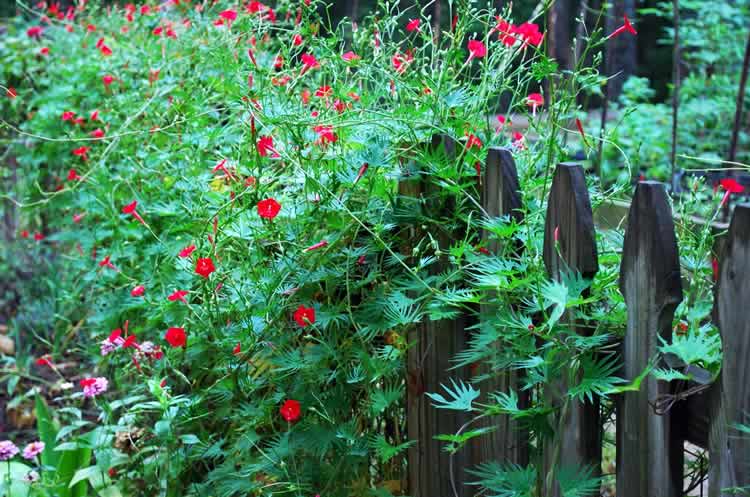

Among the most common are:
- ornamental beans - it is an annual plant with red-orange flowers, it is afraid of frost, therefore, planting is carried out in May;
- sweet peas - an annual with a delicate aroma;
- kobeu is a liana-like plant that blooms with bells and looks like a waterfall;
- nasturtium is a decorative annual with velvety lemon-colored flowers, the height of which reaches 4 meters;
- Ipomoea is an annual with crimson and purple flowers, which is planted in open ground in early spring. The plant is not capricious and does not require additional care.
Landing
Brandy is planted in late autumn. September-November is often recommended for this, but to a greater extent, one should be guided by the soil temperature, which should not exceed 6-10 °. The outside temperature can be much lower.
A place
The place should be chosen responsibly, since the plant does not like frequent transplants. Choose an area where moisture does not stagnate after rains or spring melting of snow. With prolonged stagnation of water, the bulb is damaged by fungal or putrefactive diseases, so growing in such a place is difficult.
Fast growing plantings
The annuals listed above are fast-growing and are commonly used to create living fences and hedges.
As for perennials, this category includes hops, which are characterized by accelerated growth in summer. If you set yourself a goal and observe this process, you will notice that the plant is gaining in height by several centimeters per day.


Perennial fast-growing plants also include:
- clematis;
- honeysuckle.
A prerequisite for organizing care is a garter, since young shoots are rapidly lengthening.
Deciduous vine
Campsis
Plant of the Bignoniev family, native to North America and China. The American is more adapted to the conditions of our winter. It is thermophilic and photophilous, but is ready to grow in partial shade. Loves regular watering.Bloom lasts from June to September. Liana grows up to 15 meters high. Timely pruning, it can be given any shape. The flowers are tubular pink, crimson, red, orange, red-golden.
Propagated by seeds (rarely), cuttings, layering and root shoots. Large bright flowers attract not only people. Everything that flies, crawls and jumps tends to his bells. Therefore, experienced gardeners do not recommend decorating gazebos or other resting places with this vine. Distributed on the Black Sea coast, in Central Asia, but can grow in mid-latitudes, if a good shelter for the winter is provided. Able to withstand return frosts up to -2 C.
Wisteria
It is an incredibly beautiful and fabulous plant with large dangling clusters of fragrant purple flowers. It was this plant that was used in the filming of the movie "Avatar" as the Ava tree. A large woody plant with spiral-shaped stems reaches a height of 18 m. It prefers humid subtropics, but is successfully cultivated in more northern latitudes.
Abundant flowering begins at 5-6 years of plant life in March - early April before the leaves appear. In autumn, this plant also looks unusual - lemon leaves and large legume pods with seeds. A young plant requires close attention - a warm, slightly shaded and windless planting site with good drainage.
It propagates well by layering and seeds, as well as cuttings and root grafting. For the winter, the young plant is removed from the supports and laid on the boards, then covered with coniferous branches and wrapped in agrotechnical cloth.
Climbing evergreens
Plants in this category deserve special attention, as they are pleasing to the eye all year round. Such plantings do not require specific care, while growing at a fairly rapid pace.
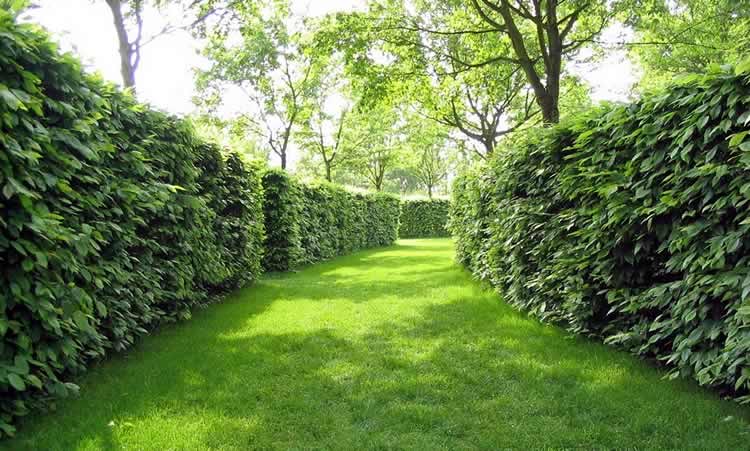

Honeysuckle hedges
Commonly found evergreens include:
- bougainvillea - a thermophilic plant that has found application as a decorative decoration for fences and arches;
- honeysuckle is a liana with bright flowers and large leaves, reaching 6 meters in height. Disembarkation is carried out in a light or semi-darkened area;
- ivy.
Botanical description of the spring brand
This culture belongs to the representatives of the flora of mountain meadows - it can be found on the Mediterranean coast or in Eastern Europe.
The plant is perennial. Its feature is the absence of a stem. It belongs to the Liliaceae family. Blossoming of the brandy begins before the leaves form.
Large buds appear from the ground, and after their opening, leaves begin to form, reaching a length of 20 cm. They are narrow, green in color with a bluish tint. The flowers of the bulbodium are simple, the petals are inherent in white or purple color. The plant begins to bloom after the snow melts. In the conditions of the middle zone, this occurs in April.
The brandy flower is found in 2 types. There are also several plants similar to it, which are sometimes mistakenly referred to similarly.
The varieties of this culture include:
- Spring brandu(Bulbocodium vernus). A feature of the plant is the location of its flowers on the surface of the earth. In this case, flowers are formed first, and then leaves appear. The color of the flowers is lilac-pink. They have a star-like shape and a diameter of about 7 cm. The leaves of the plant are elongated and narrow. The flowering period is 3 weeks in April. Seed ripening occurs in June. At the same time, the leaves begin to turn yellow and die off.
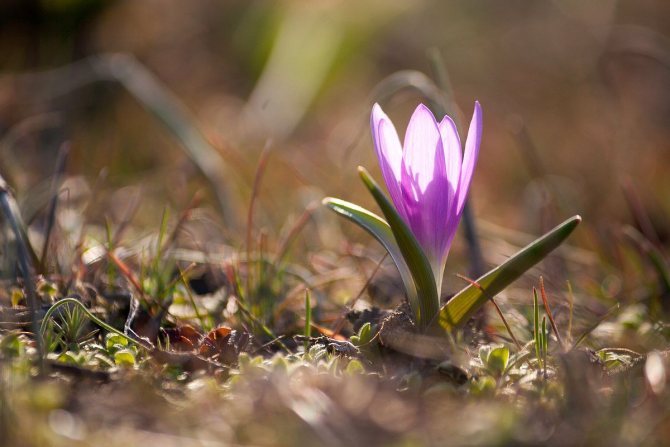

Photo: spring brandy flower


Photo: multicolored brandy flower
Sometimes the herbaceous plant, the tailed poultry plant, which is popularly called the white branushka, is considered to be a plant species. It is similar to the crop in question, but it has a different shape of inflorescence and leaves. It also differs in color.


Plants for chain-link fences
The most convenient option for growing climbing vines is netting mesh hedges, which are usually used in the inner part of the yard for fences between neighbors. The design itself is inexpensive and aesthetically unattractive.
It is possible to radically correct the situation with the help of vertical gardening. From a practical point of view, a chain-link fence, due to the presence of cells, is ideal for curly ones.
For this decor, hops and ivy are considered the most suitable. These vines are characterized by intensive growth, which provides a lush, lively landscaping to the fence instead of an unaesthetic mesh fence.
In addition, clematis and a number of other annuals with bright flowering serve as decoration of structures made of chain-link.
Exercise 3. Rewrite by inserting missing letters. Explain the spelling n and nn B
English 54 Answers - 1 Exercise 3. Rewrite, inserting the missing letters. Explain the spelling of n and nn in participles and verbal adjectives. A balovy child, a disguised entrance, a weaving basket, a haunted view, loading a car with wood, a weapon in a car, a lorry, shooting a game, unheard of circumstances, before. soldier in hand, slaked lime, quicklime, named brother, Paved road, painted with watercolors, wounded soldier, molten metal, asphalt street, salted snack, burden. haunted hat, shabby boots, ivy-braided fence, excited conversation, thrown stone, inadvertent meeting, purchase. goods, faxed letter, refined resources by economists, insured oe property, unforeseen circumstances, put up armed resistance, confidant, certified specialist
The question was asked by a student
Top Comments Archive
"December 2020" MonTueWedThuFrSaSun
| 1 | 2 | |||||
| 3 | 4 | 5 | 6 | 7 | 8 | 9 |
| 10 | 11 | 12 | 13 | 14 | 15 | 16 |
| 17 | 18 | 19 | 20 | 21 | 22 | 23 |
| 24 | 25 | 26 | 27 | 28 | 29 | 30 |
| 31 |
How to properly trim climbing plants
Plants used for gardening fences usually lend themselves very well to shearing. Difficulties can arise only when cutting clematis.
To work you will need:
- Pruner. It is best to purchase a tool with long, comfortable handles. If the fence area is large, then it is worth buying an electric or gasoline pruner.
- Stakes.
- Twine.
- Thick, high garden mittens.
- Protective glasses.
- Wheelbarrow.
- Stable staircase.
Well-grown vines, grapes and hops are most often trimmed in autumn, flowering varieties after the end of the flowering period.


Operating procedure:
- Using stakes and twine, mark the contours along which the haircut will be made.
- The haircut starts from the top. The first step is to form the upper horizontal edge.
- The entire marked surface is carefully trimmed along the marked contours.
- Trimmed shoots are carefully removed.
The most unpretentious varieties of climbing plants
Some types of climbing plants literally grow by themselves, they only need to be planted.
Ivy
The record holder for unpretentiousness and resilience. It is certainly not as impressive in its appearance as Rose or Wisteria, being just a green wall, without flowers. But ivy has its own advantages:
- It is an evergreen plant. Even in mid-latitude climates, ivy will adorn fences and walls with its greenery throughout the year.
- Grows well everywhere, regardless of the lighting level. Sucker roots allow it to stick to any surface.
- The green wall acts as a wonderful backdrop for other flowers - roses, gladioli, tulips.
The plant is successfully used for landscaping balconies and terraces, and the ivy-covered gazebo is a classic of the genre, a place for quiet solitude and dates for couples in love.
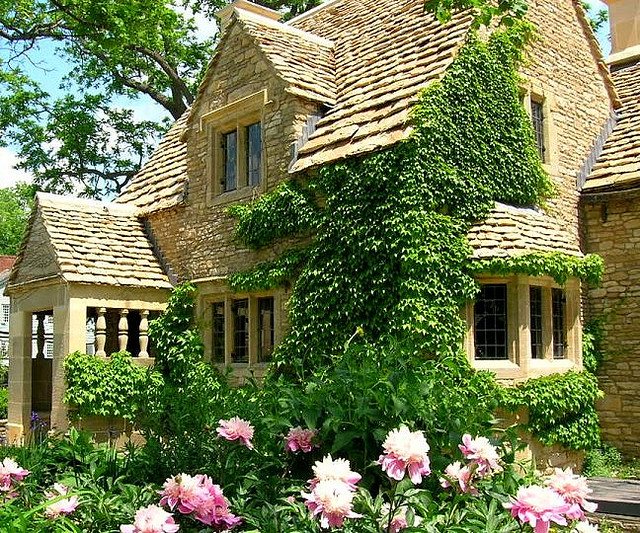

Maiden grapes
This plant reveals its beauty to the maximum with the onset of autumn. Against the backdrop of a fading garden, the bright palette of Maiden Grape leaves is mesmerizing. The plant also amazes with its unpretentiousness.It grows on any soil, tolerates shade well and is not afraid of frost, so you do not need to cover it for the winter.
There is no need to create additional supports for him, the whips will independently cover all the available space with their foliage. Not susceptible to Maiden grapes and diseases and pests. The plant can be planted, watered well and forgotten about it for a long time. The only care you need to take is trimming old lashes, or those that have started to grow in the wrong place.
Maiden grapes bloom modestly in July, with small but fragrant flowers. The fruits ripen in September, they are inedible, they have only a decorative function.
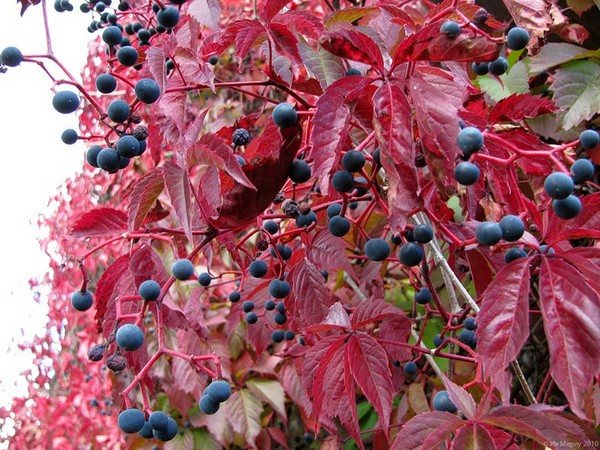

IMPORTANT: Plastered walls can be damaged from landscaping with Maiden Grapes. Under the weight of the foliage, the plaster will just start to fall off. Without fear, you can only decorate with a plant brick, concrete and wooden walls.
Among the varieties of climbing plants, there are also those that, in addition to their beauty, delight with useful fruits. This is ideal for rational gardeners who want to make the most of their property.
The most popular climbing plants for green hedges
Maiden grapes - is the undisputed leader among the plants growing on fences. In summer, it pleases with bright greenery, in autumn its leaves turn red, forming a luxurious purple carpet.
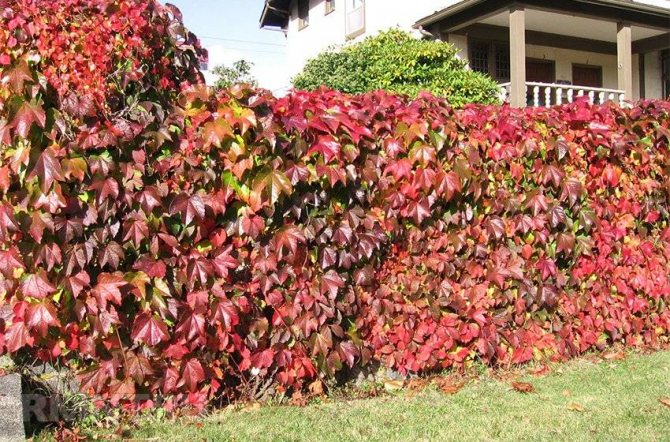

The most popular varieties are:
- Grape girlish ivy Vicha (triangular).
- Virginian virgin grape (five-leafed).
During a year, Virginia's ivy can grow by 2-3 meters, and Vich's ivy can grow by 4-5 meters, so they will very quickly cover a large area of the fence. In the middle lane, it is better to give preference to the five-leaf variety, since it is very unpretentious and shade-tolerant, but it feels better in the southern regions.
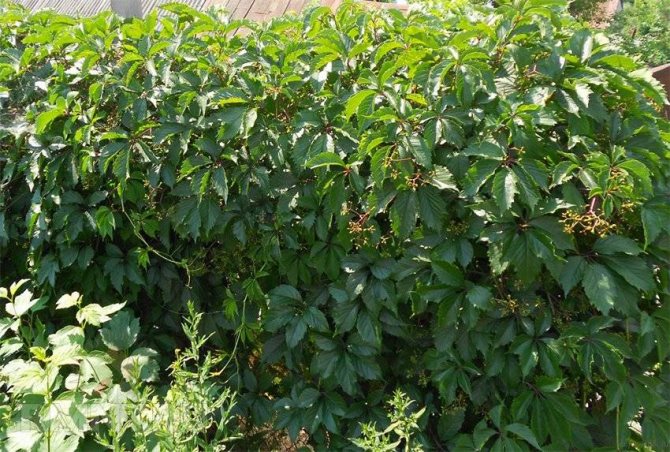

Honeysuckle honeysuckle grows well and blooms beautifully. It can be planted in shaded areas. It is also unpretentious to the soil, but it does not tolerate severe frosts, therefore, for wintering, it is preferable to lay it together with support on the ground.
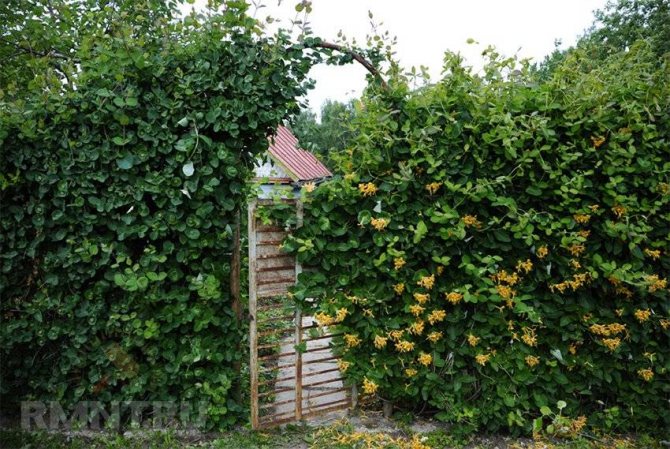

Important! Often, honeysuckle shoots quickly spread along the ground if a flower bed or garden is broken under the fence - this can cause difficulties in caring for them.
Deciduous vine campsis (Bignonia). The plant grows rapidly, it can rise to a height of 15 meters. It adheres well to the surface with suction roots. Despite its southern origin, it takes root well in the middle lane. Bright greenery, flowers of red, pink and yellow color make this vine an excellent decoration of the site.
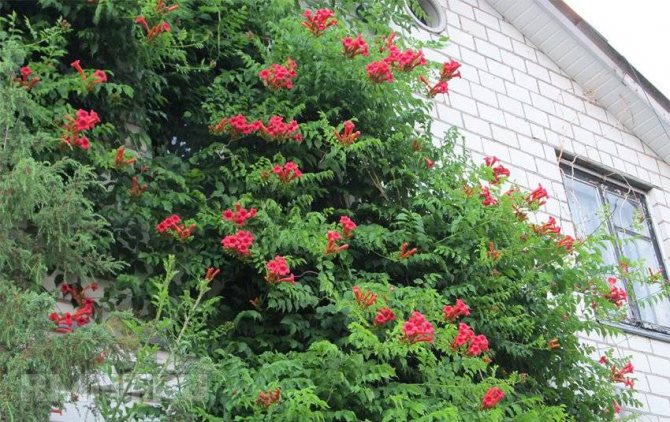

Important! The plant is very aggressive in root propagation, so before planting it is worth considering a way to limit the shoots. Alternatively, you can offer a deep-rooted curb device.
Hop can be called the most unpretentious and resilient inhabitant of fences. After planting, the plant will quickly begin to grow in different directions in search of a solid support. Over the summer, it can grow by 4–8 meters.
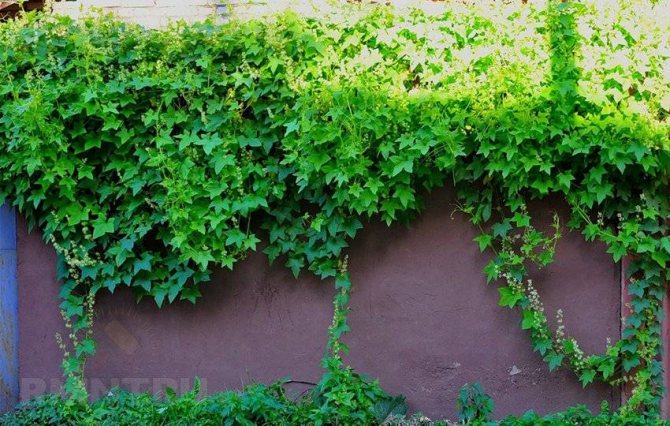

When forming a fence, it is better to stretch the shoots along the supports, trying to prevent the formation of loops. Many gardeners recommend cutting off the entire aerial part of the plant in the fall, but you can limit yourself to removing some of the shoots that have dried up by spring.
Clematis. It is one of the brightest flowering vines used in vertical landscaping.
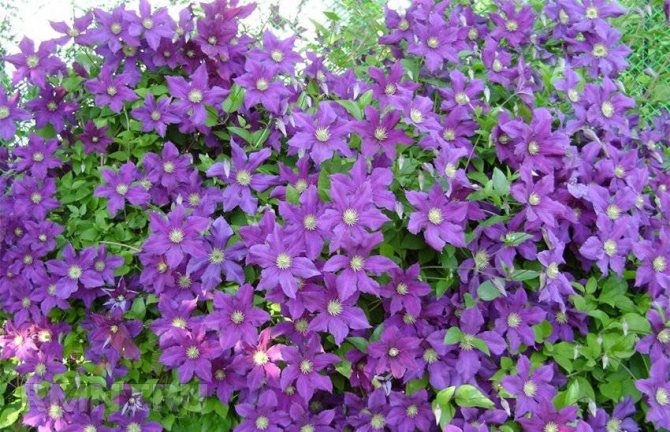

Pink, purple, blue flowers of different sizes against the background of small leaves will turn the most unsightly fence into a blooming carpet. But the plant is quite capricious, it is demanding on soil, watering, feeding, lighting. The plant has a highly developed root system (the length of root shoots is up to 1 m) and does not tolerate the presence of groundwater. The optimum height of the support is 2–2.5 m. For the winter, the plant is removed from the supports and covered.
Important! Clematis grows poorly near metal fences, since the thermal regime necessary for the plant is violated.
Climbing roses. Subdivided into two groups:
Large-flowered (climber)
Climbers have stiffer and thicker shoots, which is an advantage when landscaping fences. On the fence, the climber is best fixed with a fan, or left in the form of a huge formed bush. They rarely grow more than 2–2.5 m.
Small-flowered (ramblers)
The shoots of ramblers are more flexible and thin; they are best used to decorate arches or gates in a fence. Rambler grow in length, their shoots reach 3-4 m.


In recent years, more and more hybrid varieties have appeared that combine the advantages of both types.
For the winter, the roses are removed from the supports, folded in a spiral and laid horizontally, after which they are covered. Pruning should be done very carefully.
Wisteria. It is rarely used for vertical gardening.
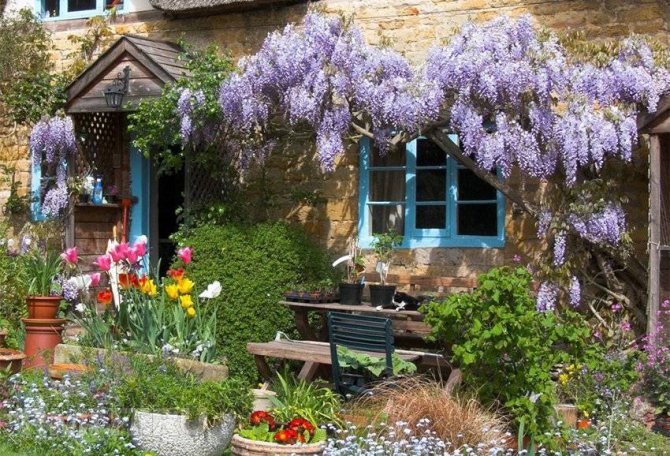

Growing this capricious subtropical plant is not easy. But the incredibly beautiful lavender flowers of this vine, which naturally grows to a height of 18–20 meters, will be a real reward for your efforts. True, the flowers will have to wait long enough - about five years. Wisteria blooms in spring, at the beginning of summer, and by autumn it pleases the eye with unusual lemon-yellow foliage.
Important! Wisteria must be removed from the supports for the winter, placed on a wooden pallet and carefully wrapped. Agrotechnical fabric is best suited for this purpose.
Popular annual species
Annual plants are poorly adapted to the cold, so they must be sown annually. But they also have their advantages. These plants are faster growing than their perennial relatives. In just two months they can completely cover any structure with dense thickets, and by the middle of summer they will be presented in all their glory.
Morning glory
This one-year-old vine is great for creating a terrace or balcony screen, for decorating a gazebo and a fence, as well as for planting in containers. Differs in rapid growth - in the middle of summer you will already have a solid green carpet with flowers of purple, blue, white or crimson color. Flowering begins in June and lasts until October.
TIP: The main condition for the rapid growth of Ipomoea is soil fertility. The plant needs to be regularly fed with mineral fertilizers and a small amount of nitrogen.
Planting is done in early May. You can plant both seeds and sprouts. A well-lit place should be chosen; in the shade, plant growth will slow down. Watering should be moderate as the soil dries up. No other additional care is required.
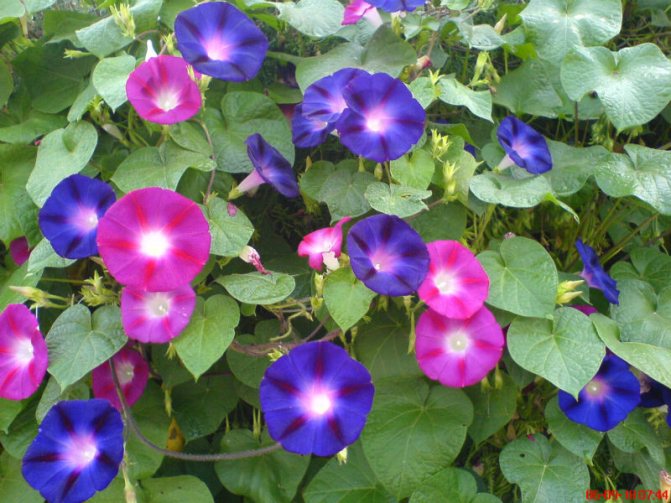

Sweet pea
Most often used to decorate terraces and balconies. The plant is valued not so much for its beauty as for its exquisite aroma, this can be judged from its name. It has a huge color palette and a long flowering period of 3-4 months. It tolerates spring frosts well, it can be sown in early spring. It is important to provide support for the plant in time, if the moment is missed, you will not unravel the shoots. In order to preserve the decorativeness of sweet peas as long as possible, it must be provided with good lighting and watering, and wilted flowers must be removed in a timely manner.
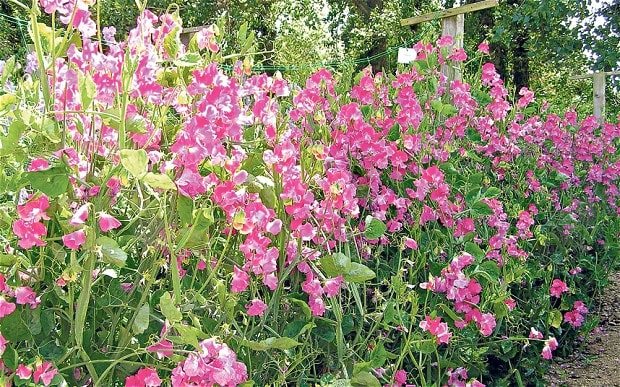

Kobei
One of the oldest species. This vine was cultivated back in 1787, and to this day it remains a popular decoration of hedges and gazebos in the country. The plant has shoots up to 4 m long and large bell-shaped flowers of purple and white shades. It begins to bloom from July until the first frost.
Suitable for growing both in the sun and in the shade. It climbs the walls on its own, with the help of its antennae. Does not require special care. Planting can be done with both seeds and cuttings. In the second case, for the winter, the roots must be dug up and stored in a cool room. The advantage of Kobei is that there is no need to constantly remove the fading buds. When the time comes, they themselves fly away under the influence of the wind, and the plant retains its decorative effect.
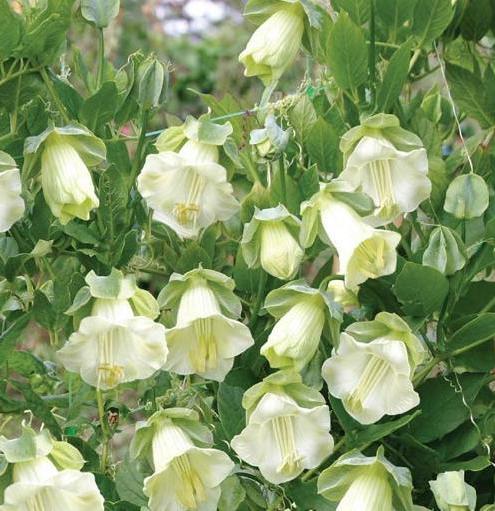

Most climbing plants are easy to care for, but there are varieties that don't require much effort to grow.






